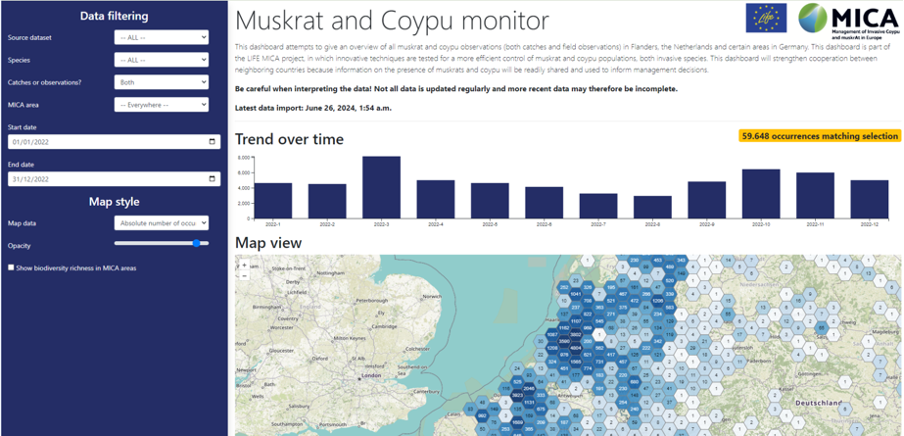Open data in the fight against muskrat and coypu
Managing invasive species across borders only works if responsible authorities and managers smoothly exchange data. This is certainly true for the muskrat and the coypu, which spread through interconnected rivers across borders. The LIFE MICA project published almost one million new observations from the period 1987 to 2023 on the Global Biodiversity Information Facility (GBIF). This allows to strengthen cross-border cooperation between the Netherlands, Germany (Lower Saxony) and Belgium (Flanders).
During this project, which ran from 2019 to 2023, partners from seven institutions worked together to develop innovative detection and management methods, such as smart camera traps, eDNA analysis and smart capture cages equipped with cameras. Another key objective was to optimise data flows around management.
Before LIFE MICA, data on these animals and their management were in isolated databases. With automated publication to GBIF, data from managers are now centralised for a large geographical area in north-western Europe. A dedicated application extracts these data from GBIF and visualises rat sightings and catches. Besides MICA partners such as the Vlaamse Milieumaatschappij, other managers such as Rattenbestrijding Oost-Vlaanderen also supplied data. We supplemented these professional datasets with citizen science data. This dashboard will now be further tested in a new project.
Tim Adriaens, Peter Desmet , Emma Cartuyvels
Image above: muskrat (photo Rollin Verlinde - Vildaphoto)
Website interface

